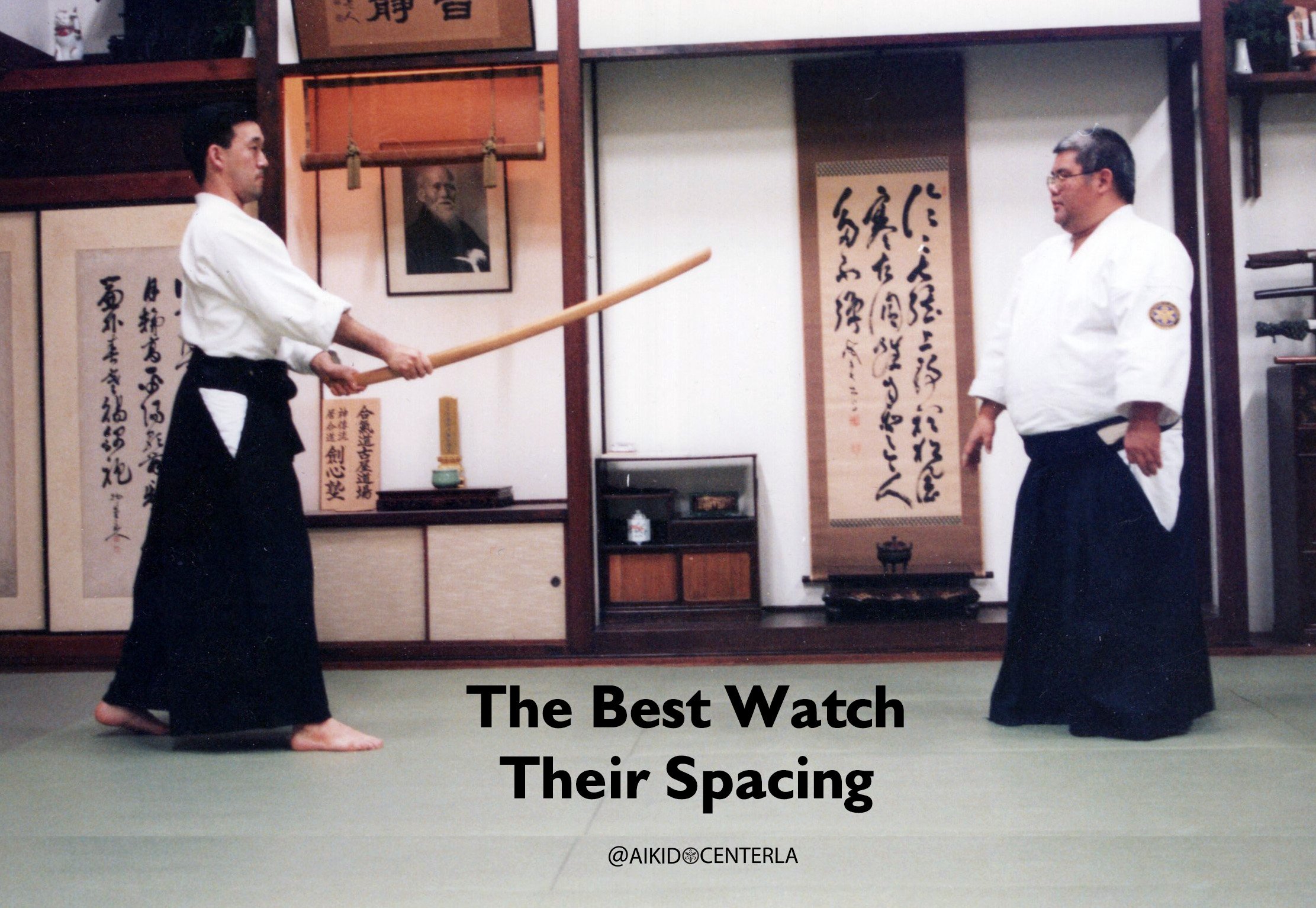The best Aikidoist always keeps their distance. One corrections that Furuya Sensei would often say was, “Watch your spacing.” In Japanese traditional arts, “spacing” or ma-ai (間合い) is the distance between two opponents. It is said that the best martial artist “commands spacing and timing.” It is thought that if one can control the spacing, then they can control the timing and vice versa. Timing is a more ephemeral concept to understand and thus harder to grasp. Spacing is easier to understand and learn because it is physical.
One question that students often ask is, “How close should we be to our opponents?”The answer is that one’s ma-ai (間合い) or “spacing” depends on one’s ability level and what art is being practiced. Every martial art has its optimal spacing. Striking arts tend to be farther away than grappling arts. Weapon arts also employ a variety of different spacings based on the technology of the weapon. One reason why many arts employ the use of weapons in their arts is so that students not only learn how to use them but also learn their spacings as well.
When we understanding spacing, we realize it is an important factor in controlling the tachiai (立ち合い) or “the initial moment of contact.” Being able to know and control where an opponent will be and what they will be doing at the moment of attack is the key to being able to obtain the victory.
Aikido utilizes swordsmanship spacing which is called issoku itto no ma (一足一刀の間) or the distance one can cover in “one step, one cut.” The basic distance is approximately six steps apart or the distance where each swordsman’s sword tips slightly overlap. One reason a swordsman utilizes this range is because when the sword tips touch, a good swordsman can supposedly read their opponent’s energy and mental state and use it against them. Later, as we become more proficient, we start to stretch that spacing out.
In Aikido, we begin with grabbing attacks. One reason for this is because static attacks teach the novice spacing. This is the basis of learning the “one step, one cut” mentality. In the beginning, our opponent builds a strong grip and then we learn to overcome that grab with movement and create a technique with our movement. Later, as we become more experienced the attack becomes more dynamic and we move as the spacing collapses just prior to or as the opponent grabs. This is also where we introduce more dynamic attacks like striking.
Spacing is so important that there is a saying in the martial arts: “Range is king.” This adage holds true in Aikido and in life. In everything we do, we should try to keep the optimal distance which enables us to be safe but still remain effective. It is dangerous to allow people or our opponents to get too close to us too soon. To gain a person’s confidence and trust takes time. The other day, Ken Watanabe Shihan said, “A martial artist always takes the longest path to cover the shortest distance.” Understanding this, perhaps that is why the best Aikidoist always keeps their distance.
Today’s goal: Watch your spacing. Not everyone has your best intentions at heart.
Watch this video to better understand swordsmanship distance

